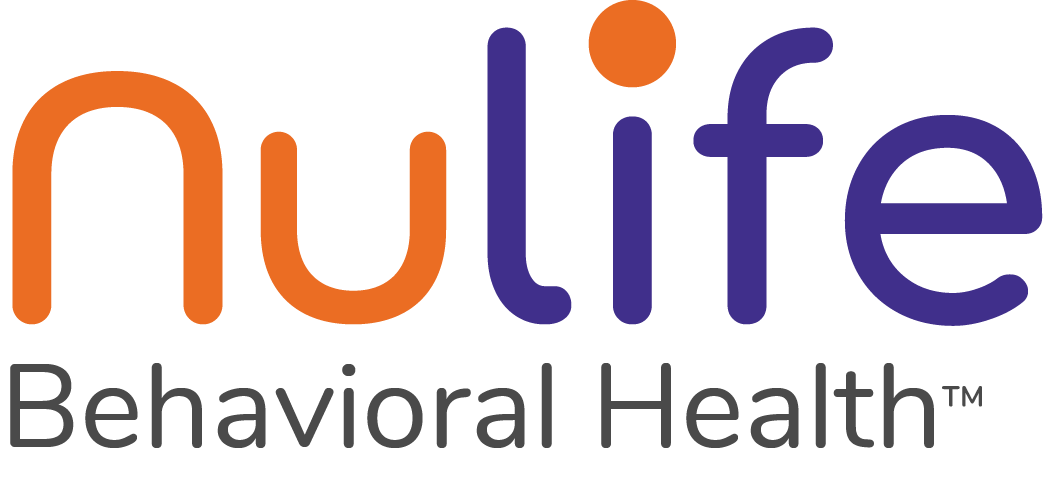Being nervous, jittery, or worried all the time can be absolutely exhausting. If anxious feelings won’t go away and last longer than the situation, or if your stress is out of proportion to the problem, you might be experiencing an anxiety disorder. About 31% of U.S. adults experience an anxiety disorder at some point during their lives. Although there are many varieties of anxiety, all types of anxiety disorders interfere with your work, social life, relationships, and daily life.
NuLife Behavioral Health Indianapolis can help manage, reduce, and eliminate your anxiety. On this page, we will explain the different types of anxiety disorders, their symptoms, and the risk factors for developing these disorders.
What is Anxiety Disorder?
Anxiety is a psychological and physical reaction to the perception of a threat. This reaction causes our bodies to prepare to fight, flee, or freeze. However, the whole process is controlled by the perception of a threat—not the actual threat itself. In an anxiety disorder, our bodies, particularly our nervous systems, keep reacting as if there’s a real danger nearby. An anxiety disorder keeps us from returning to our typical physical state; consequently, we feel like we’re always under threat.
Symptoms of an Anxiety Disorder
Anxiety disorders are one family of mental illness with persistent, intense, and disruptive symptoms. These symptoms may worsen over time and interfere with your work, schooling, and general daily life.
Typical symptoms of an anxiety disorder may include:
| · Feeling nervous, restless, or tense
|
· Having trouble sleeping
|
· Trembling
|
| · Sweating
|
· Feeling weak or tired
|
· Having difficulty controlling worry, constant worrying
|
| · Having a sense of impending danger, panic, or doom
|
· Experiencing gastrointestinal (GI) problems
|
· Trouble concentrating or thinking about anything other than the present worry
|
| · Having an increased heart rate, heart palpitations
|
· Anxiety Episodes
|
· Having the urge to avoid things that trigger anxiety
|
| · Panic attacks | · Stomach cramps | · Breathing rapidly (hyperventilation) |
Types of Anxiety Disorders
There are several different types of anxiety disorders and treatment options for anxiety disorders.
Generalized Anxiety Disorder (GAD)
Generalized anxiety disorder is the most common type of anxiety disorder and is characterized by feelings of persistent and even uncontrollable worry or dread. These anxieties may impact your daily life, including your ability to participate in work, school, or relationships. They can also physically impact your body, making you tired, restless, or tense, and are commonly accompanied by depressive symptoms.
Symptoms of Generalized Anxiety Disorder include:
- Restlessness, feeling on edge
- Fatigue
- An inability to relax
- Intrusive thoughts
- Difficulty concentrating
- Irritability
- Trouble falling asleep or staying asleep
- Headaches, muscle aches, stomach aches, or any other unexplained aches and pains
- Nausea, vomiting, diarrhea
Panic Disorder (PD)
If you have frequent panic attacks, you may be suffering from a panic disorder. This disorder is identifiable by recurrent panic attacks. These attacks are sudden and intense feelings of fear, impending doom, and even losing control. They may be unexpected or in response to a stressful event or dreaded situation. During these events, some people may feel as if they are having a heart attack or other serious medical event.
It is common for those with panic attacks to fear their next attack, sometimes avoiding situations that might bring about another attack.
Symptoms of panic attacks include:
- Intense fear
- Heart palpations or rapid/bounding heartbeat
- Sweating, hot flashes, or chills
- Numbness/tingling
- Dizziness or light-headedness
- Chest pain or shortness of breath
- Nausea, vomiting, or abdominal pains
- Trembling or shaking
- Feelings of impending doom
- Feeling out of control
Social Anxiety Disorder (previously known as social phobia)
Social anxiety disorder involves an extreme, intense fear of certain social situations. It brings about severe anxiousness over being embarrassed, watched, or judged by others. It may cause you to avoid social situations or experience high levels of anxiety in such circumstances. Those with social anxiety disorder may fear situations, like meeting new people, attending parties, or having conversations.
Symptoms of Social Anxiety Disorder include:
- Blushing or sweating
- Trembling or shaking
- Nausea, vomiting, or abdominal pains
- Rapid or pounding heartbeat
- Feeling embarrassed or self-conscious in social situations
- Stiff posture or overly soft voice
- Trouble making eye contact or interacting with new people
Selective Mutism
Selective mutism occurs when a child cannot speak in some social situations but can converse openly in other settings. With this disorder, children typically feel comfortable enough to speak freely with their immediate family. However, broader social situations, such as going to school, will trigger an anxiety response, which makes it difficult for them to interact verbally. It is also common for children who outgrow selective mutism to experience other types of anxiety disorders throughout the rest of their lives.
Symptoms of Selective Mutism:
- Inability to speak in certain social situations while being able to speak freely in other settings
- Sudden stillness, a frozen facial expression, or both in certain social settings
- Inability to speak that lasts for an extended period (at least 1-2 months in each new setting)
- Speech difficulty that is unable to be explained by other diagnoses
Separation Anxiety Disorder
You can recognize separation anxiety disorder by its intense fear or anxiety related to separation from a particular individual. These symptoms will go beyond age-appropriate attachment in children and may impact one’s ability to function in daily life. Examples of fears someone might feel include:
- Being afraid to leave or be left by a loved one
- Being afraid to lose a loved one
- Being afraid to be in a separate location from a loved one
- Experiencing nightmares related to these fears
Specific Phobias
A phobia is an extreme, disproportionate fear of a specific object or situation. If you are experiencing a phobia, you may feel intense distress, causing you to avoid certain situations. Common phobias include certain animals (e.g., spiders, snakes, dogs), heights, and traveling.
Symptoms of Specific Phobias:
- Immediate and intense fear, dread, or anxiety over an object or situation
- Increased heart rate or sweating
- Trembling or shaking
- Shortness of breath or tightness in the chest
- Understanding that the fear is irrational but an inability to control the fear
- Avoidance of related objects or situations
Agoraphobia
Agoraphobia is a complex phobia in which a person fears situations or areas that could be difficult to escape from or embarrassing to leave. People with agoraphobia also fear being in situations or locations where it would be difficult to receive help if a threat arose.
Most people who experience agoraphobia have intense anxiety related to at least 2 of the following situations:
- Public transportation
- Enclosed spaces
- Open spaces
- Standing in line or being in a crowd
- Being outside of the home
Individuals may altogether avoid or have intense anxiety when faced with these situations. Some may progress to the point where they cannot leave their homes.
Other Related Disorders
Below, we have listed some disorders that carry similar symptoms to the anxiety disorders discussed above. While these disorders are not technically considered anxiety disorders, they’re still serious mental health concerns that involve a lot of anxious feelings.
If you or someone you know is experiencing any of the following disorders, we at NuLife Behavioral Health Indianapolis are also here to help.
Obsessive-Compulsive Disorder (OCD)
If you are experiencing recurrent unwanted or intrusive thoughts/obsessions, you may be experiencing obsessive-compulsive disorder. This disorder is characterized by frequent unsettling thoughts and irresistible developed rituals or repetitive behaviors to help cope with these thoughts.
Post-Traumatic Stress Disorder (PTSD)
Post-Traumatic Stress Disorder is a collection of symptoms that occur following the experience of a traumatic event, such as war, natural disaster, or assault. These symptoms may include:
- Trouble relaxing
- Flashbacks or nightmares related to the traumatic event
- Depression
- Anger or irritability
- Difficulty concentrating
- Emotional numbness
- Avoidance of situations similar to or related to the traumatic event
Risk Factors for Anxiety Disorders
The causes of anxiety disorder are not fully understood, but several risk factors are believed to contribute to the disorder. These include genetic, developmental, environmental, physiological, and psychological components. Certain anxiety-related symptoms can be caused by health conditions — including thyroid dysfunction and heart arrhythmias. Caffeine and other substances or medications can also contribute to anxiety symptoms. Experiencing trauma or increased stress can contribute to increased anxiety as well.
Anxiety Treatment in the Indy Metro Area
Regardless of which anxiety disorder you’re experiencing, many treatment options are available. Note that there is not a one-size-fits-all cure for anxiety disorders. Everyone is different, and it often requires a combination of an individualized mental health treatment plan, therapy, and medication to alleviate anxiety symptoms.
If you’re near the Indy metro area, NuLife Indiana offers outpatient services, including Intensive Outpatient Programs (IOP) and Partial Hospitalization Programs (PHP) to meet your needs. Outpatient services involve regular sessions with our licensed mental health professionals while continuing your daily activities like work or school. IOP is recommended for moderate to severe cases of anxiety, while PHP provides the most intensive level of care outside of inpatient care.
Whatever you believe is best for you or someone you know, we are in the Indianapolis area to walk through your mental health journey with you.
Regardless of what anxiety symptoms you or someone you know may be experiencing, treatment options are available. You are not alone in these feelings, and NuLife Behavioral Health Indianapolis is here to connect you with resources and our licensed mental health professionals. Please contact us for more information on finding the care you need to get back to being you.
References
https://www.nimh.nih.gov/health/topics/anxiety
disorders#:~:text=The%20symptoms%20can%20interfere%20with,and%20various%20phobia%2Drelate d%20disorders.
https://www.nimh.nih.gov/health/statistics/any-anxiety
disorder#:~:text=An%20estimated%2031.1%25%20of%20U.S.,some%20time%20in%20their%20livs.
https://www.samhsa.gov/mental-health/anxiety-disorders
https://www.mayoclinic.org/diseases-conditions/anxiety/symptoms-causes/syc-20350961? mc_id=global&utm_source=webpage&utm_medium=l&utm_content=epsmentalhealth&utm_campaign= mayoclinic&geo=global&placementsite=enterprise&invsrc=other&cauid=177193
https://mhanational.org/conditions/anxiety



